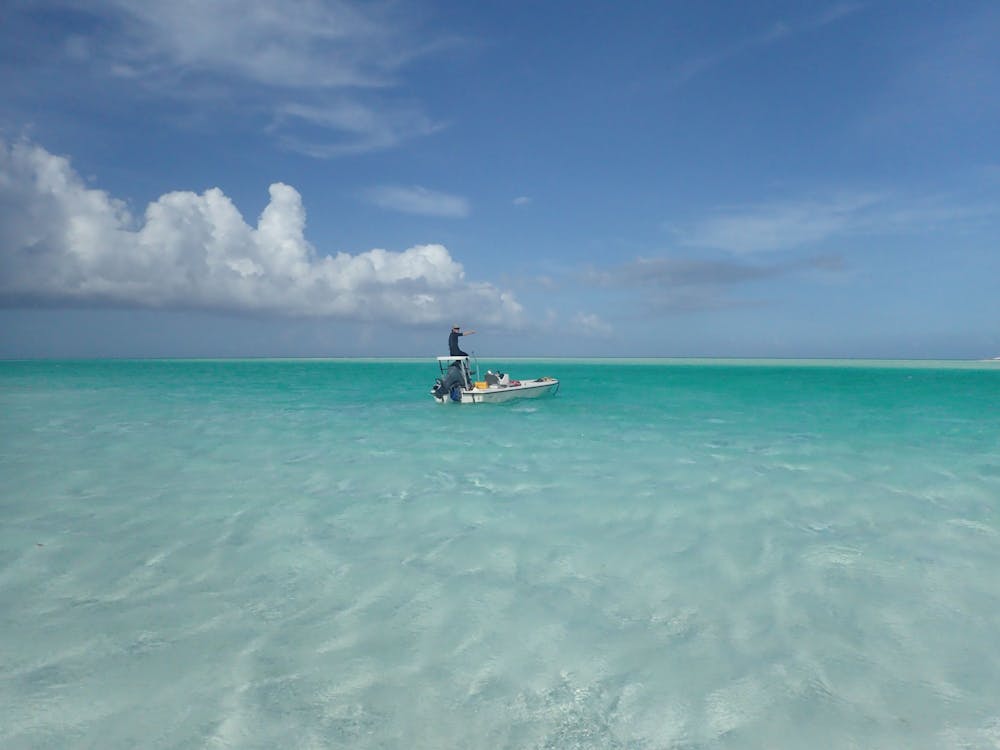On Nov. 8, Emily Geyman ’19, had one chapter of her senior thesis: “How do Shallow Carbonates Record Sea Level and Seawater Chemistry?” published in the Proceedings of the National Academy of Sciences of the United States of America (PNAS) journal.
Geyman graduated from the University with an A.B. degree in geosciences. Geyman’s thesis focused on the use of carbonate rock to record indicators of ancient climate. Carbon dioxide (CO2) levels serve as a thermostat for the planet, so Geyman focused on deciphering signals of a changing carbon cycle preserved in rock. Understanding how the modern carbon cycle is translated from CO2 in the atmosphere in CaCO3 in rock will allow for a better understanding of Earth’s ancient climate.
The article published in the PNAS journal was a chapter in Geyman’s thesis which specifically focused on why carbon-13 concentrations are higher than would be expected in sedimentary rocks in the Bahamas.
Although scientists are able to accurately measure present-day levels of carbon dioxide, going further back gets much more difficult. Samples of ancient ice, known as ice cores, from deep under Antarctica and Greenland, can only go back about a few million years at best. This means most of the four-and-a-half- billion-year geologic history of our planet is relatively inaccessible.
However, there is another log of Earth’s climate: sedimentary rock found at the bottom of the seafloor. Sedimentary rock is formed by layers of organic and inorganic debris deposited on the seafloor over time which accumulate and harden into rock. This rock contains calcium carbonate dating back billions of years, which can give glimpses of what the ancient oceans looked like.
Researchers have interpreted changes in the global carbon cycle from ancient carbonate layers since the 1980s. However, little research had been performed to understand how carbonates form today.
“Scientists hadn’t done the leg work to understand modern calcium carbonates. Geyman looked for the Rosetta Stone of how calcium carbonates form today to translate records from the past,” Professor Adam Maloof, Geyman’s senior thesis advisor, explained.
Geyman’s thesis aimed to provide a theoretical framework for scientists studying the past to reinterpret data. Her work can be described in five chapters, Maloof said.
The first phase was to create an accurate map of water depth. Geyman’s research was conducted in the Bahamas, primarily due to the shallow water and geologic stability. Sedimentary rock in deeper oceans is frequently subducted into the Earth’s mantle, which destroys it and any carbonate records. So the modern Great Bahama Bank is an excellent analogue for the paleoenvironments represented in the rock record.
Because the region is too shallow for oceanography ships, Geyman had to create a measure to the nearest 10s of centimeters of how deep the water is where she took samples. Many of the islands visited had never been explored on foot, only photographed from space.
“We started off from Andros Island in a small 14-foot boat loaded with a month’s worth of food, gasoline and water. The Bahamas are great for research on samples because they’re extremely shallow; most of the time the water is barely up to your neck,” Geyman recounted.
Samples were collected through hundreds of free dives into the clear blue water to get pieces of sedimentary rock from the seafloor.

“There was two interests in the samples: we wanted to figure out how the chemical makeup of the sedimentary rocks is influenced by the surrounding water and how depth changes over time and affects the rock’s physical properties,” Geyman explained.
The second phase was measuring tides and creating a tide model. For this, Geyman employed satellite imagery. Using the color of the water as an indicator, with darker coloration representing deeper water, Geyman was able to reliably create a model of the tide fluctuations which could accurately show the change in water depth over a 24-hour period and thus the flux of water on and off the bank. Those measurements were important because the water carries nutrients and alkalinity required for calcium carbonate precipitation.
The third and fourth phases dealt with the chemistry of calcium carbonate. Geyman's thesis focused on this compound’s creation. In a typical day, once the sun goes up, photosynthetic organisms, known as phytoplankton, begin taking CO2 out of the water. Inside water there are two types of carbon, carbon-12 and carbon-13. Because carbon-12 forms a weaker bond, it is broken off and taken into the organism.
This creates concentrations of carbon-13 rich water around wherever the organisms were located. Calcium carbonate sedimentary rock formed during the day and thus had a much higher concentration of carbon-13 than would be normally expected. At night, as water becomes more acidic, calcium carbonates stop forming until daytime, when photosynthesis resumes.
Geyman proposed this process as “the diurnal carbon cycle engine” and realized that the carbon isotopes recorded in shallow carbonates may not reflect global ocean conditions. That realization led to a drastic new interpretation of ancient carbon isotope records, and a new understanding of how to interpret paleoclimate from rock.
As part of the same study, Geyman combined field work and numerical modeling to find the relationship between water depth and the type of sedimentary rock that would form (e.g., mud versus shelly grains). Water depth is controlled by global ice volume, which is a sensitive indicator of climate.
So, as before, Geyman developed a new way to translate the ancient rock record. Now, researchers could look at a stack of ancient carbonates and more accurately infer both changes to sea level and the global carbon cycle.
This research provides a useful tool to any industry or project interested in sea-level and carbon changes. Paleoclimatologists, the oil industry, and deep sea carbon sequestration projects could all use this modern analogue to generate a better understanding of the past.
Maloof emphasized the scope of Geyman’s research.
“Fieldwork was done over the span of two years, with a month spent in the Bahamas each year. Geyman travelled with a small boat, camping on tiny islands and diving to take samples of the seabed and make depth measurements. I’d be thrilled to see my fifth-year PhDs doing the same work she is doing,” Maloof explained.
Geyman is now researching researching ice volume changes on the Svalbard Archipelago in Norway. The goal of her current project is to create a three-dimensional model of the Svalbard ice sheet from Norwegian Air Force photographs from the 1930s. With this model, glaciologists and other researchers will be able to track how climate change affected the Svalbard ice sheet over the past 90 years.
Her research is funded by the University’s Daniel M. Sachs Class of 1960 Fellowship.








